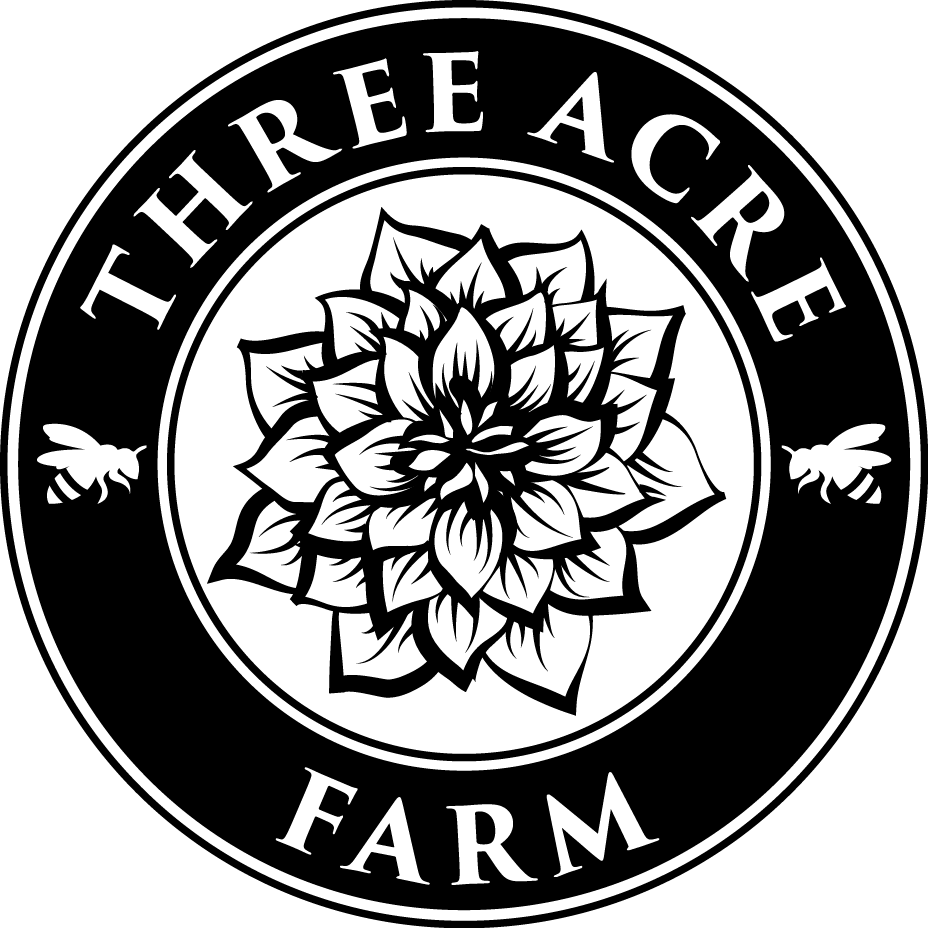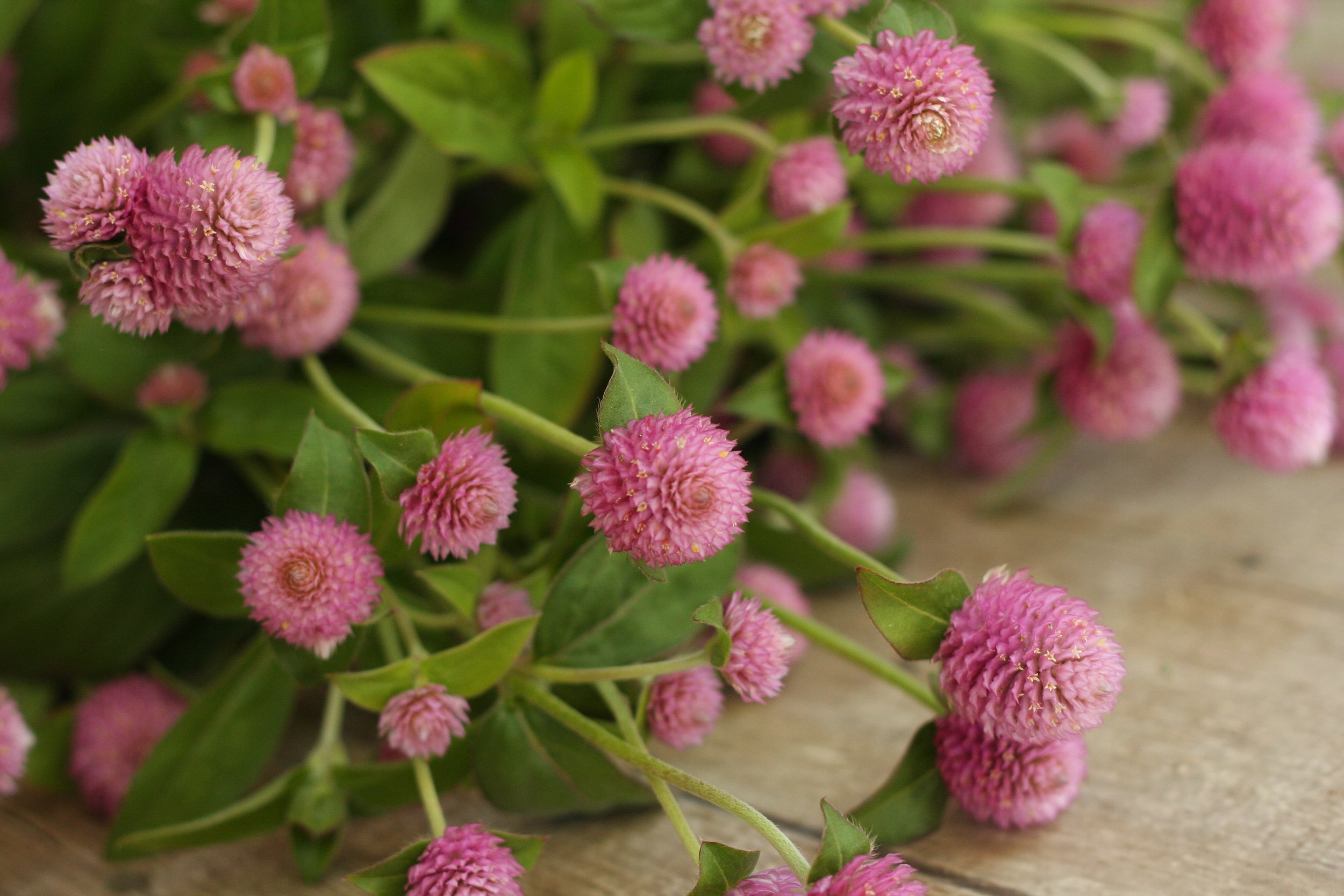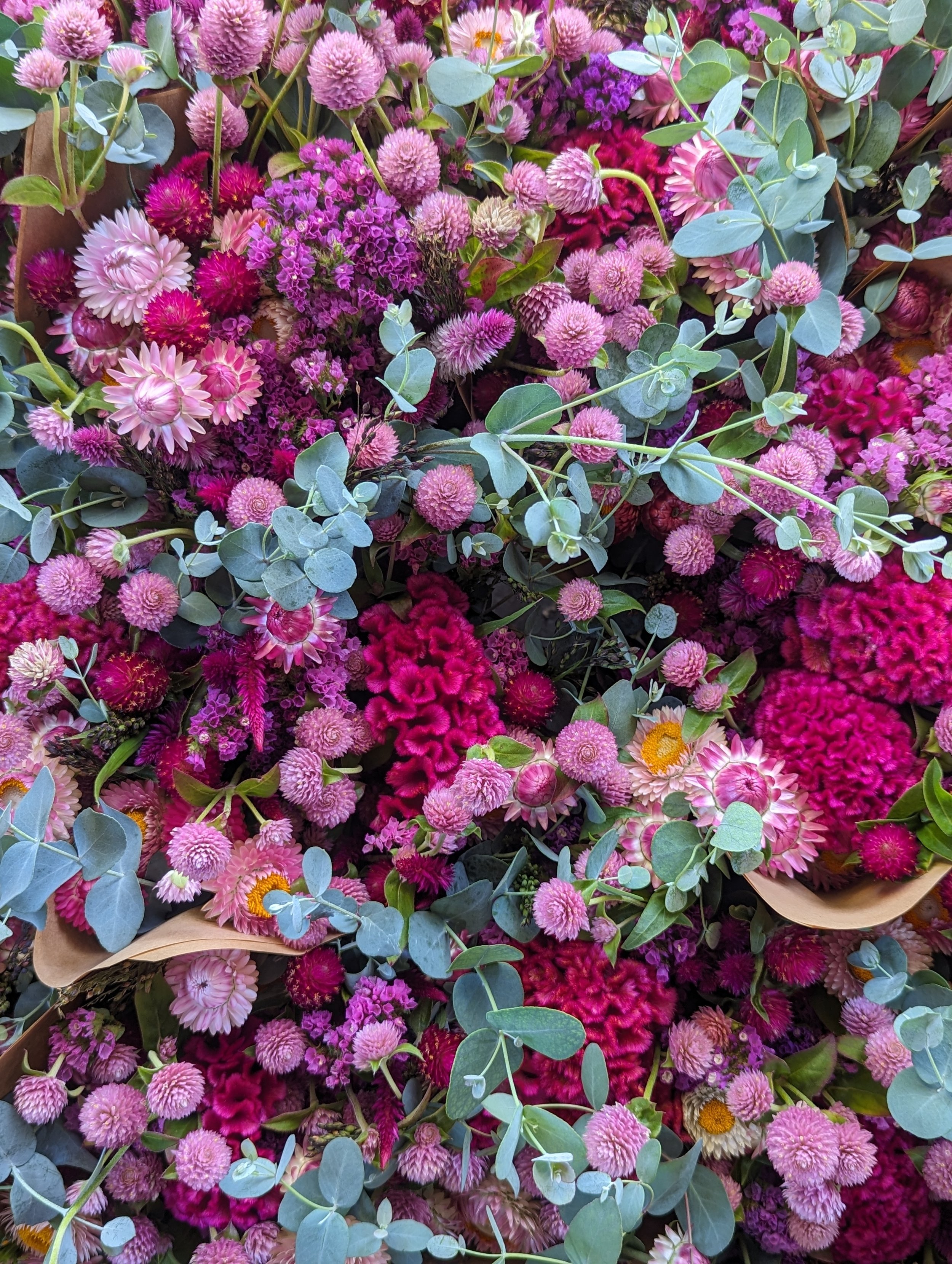How to Grow: Globe Amaranth
How to Grow: Globe Amaranth (Gomphrena)
Pronunciation: glowb am-ah-ranth or gaam-free-nuh
INTRODUCTION
Cute. Adorable. Sweet.
Gomphrena (or Globe Amaranth - I use the two names interchangeably) is not the flashiest flower in the cutting garden, but they are useful, versatile and playful. Every garden should have some!
They can be tucked into bouquets or even better, displayed on their own in bunches.
But here’s the best part - Gomphrena is a wonderful “Everlasting” (dried) flower that retains its color and form for years. During the long winter months, I have dried Gomphrena bunches scattered around, bringing brightness and beauty to our home.
Gomphrena is a heat-loving flower and thrives in hot climates.
Brilliant Mix
Let’s look at the Pros and Cons of growing Globe Amaranth for cut flower use.
PROS
They come in a variety of colors (mostly pinks, reds, violets and white)
They are a playful addition to bouquets.
They are very heat tolerant.
They have a good vase life of about 7 days.
They are an excellent “Everlasting” flower.
They are great for floral “wearables”, such as flower crowns, corsages, boutonnieres, etc.
Audray Pastel Mix
CONS
They can be somewhat tricky to harvest.
They need heat to thrive.
Audray White
CHOOSING SEEDS
There are 2 main types of Gomphrena, so pay attention while choosing seed.
Gomphrena globosa has a more branching type of growth habit. I find the stems a bit knobby and cumbersome to harvest at times, although they DO fill out a bouquet quickly. It comes in a variety of beautiful violets, pinks, and whites. The plants have broad, thick leaves. Harvestable stems have multiple blooms per stem.
Gomphrena haageana has more upright stems and harvesting is a breeze. The plants have narrow leaves that are easy to strip off. It comes in shades of red and orange, much bolder than the Gomphrena globosa colors. Harvestable stems have only one bloom per stem, so while they are easier to harvest, they are time-consuming.
Oh, how I wish these came in pastel shades too! I would probably grow only the Gomphrena haageana type if they came in more colors!
Here are a few of my favorite Gomphrena to grow for cut flower use:
“Bicolor Rose“ (globosa type)
“QIS Orange” (haageana type)
“Strawberry Fields” (haageana type)
Salmon Pastel
HOW TO SOW
Gomphrena is a late summer blooming flower and loves heat. They should be planted after the last spring frost (for us, it’s about May 15).
Transplants or Direct Sow?
Transplants are recommended, as germination can be erratic (and seedlings look like weeds!).
Transplants should be started indoors 6-8 weeks before the last spring frost. They like heat, so place the trays on a heat mat to germinate. After germination, keep the seedlings growing in a warm place.
QIS Carmine
PLANT SPACING
Spacing varies depending on what type you’re growing.
Globosa types are best at 9-12 inch spacing.
Haageana types can grow at 6-9 inch spacing.
Salmon Pastel
Audray White
By the time the plants are large enough to bloom, they are quite self-reliant. Deep watering once a week should be sufficient (water until soil is saturated as far down as you can stick your finger in the soil).
If flowers are harvested and spent blooms are “deadheaded” (removed), the plants will continue to send up blooms until frost or cold weather arrives.
We do not use netting or support with Gomphrena, since it would make harvesting difficult. If the plants are planted close enough together, they will support each other.
Audray White
STAGE OF HARVEST
Harvest when the blooms are in full color, but not “tired” and faded. Gomphrena has a long “harvest window”, which means you will have a couple of weeks where they are at the ideal stage before they start to fade (unlike some flowers that have a harvest window of just mere hours!).
Harvest deep into the plant, down to 1-2 sets of leaves from the bottom, to stimulate more growth. If you’re growing lots of them or it’s the end of your growing season, it might be easier to harvest the entire plant at once, as harvesting individual stems can be time-consuming.
We have started using this “whole plant harvest” method on our farm, instead of treating the plants as “cut-and-come again”. We succession plant Gomphrena 3-4 times over the season about 2-3 weeks apart, so we always have some plants ready to be harvested.
Salmon Pastel
POST-HARVEST CARE
As always, harvest flowers in the cool of the day (morning or evening).
Gomphrena requires no special care if being used fresh.
For dried flowers, hang small bunches upside down in a warm, dry, well-ventilated location out of the direct sun (a garage, closet or even kitchen pantry could work). Once dry, flowers hold indefinitely.
Dried Gomphrena - QIS Carmine, QIS Orange
QUESTIONS?
Ask them here and I’ll get back to you!
Ready for more?
If you’re serious about growing the garden of your dreams this year, register for my online course, “Backyard Cutting Garden 101”. You’ll find everything you need to plan, grow, harvest, and arrange your stunning blooms. I can’t WAIT to help you grow! Click on the button below for all the details.










